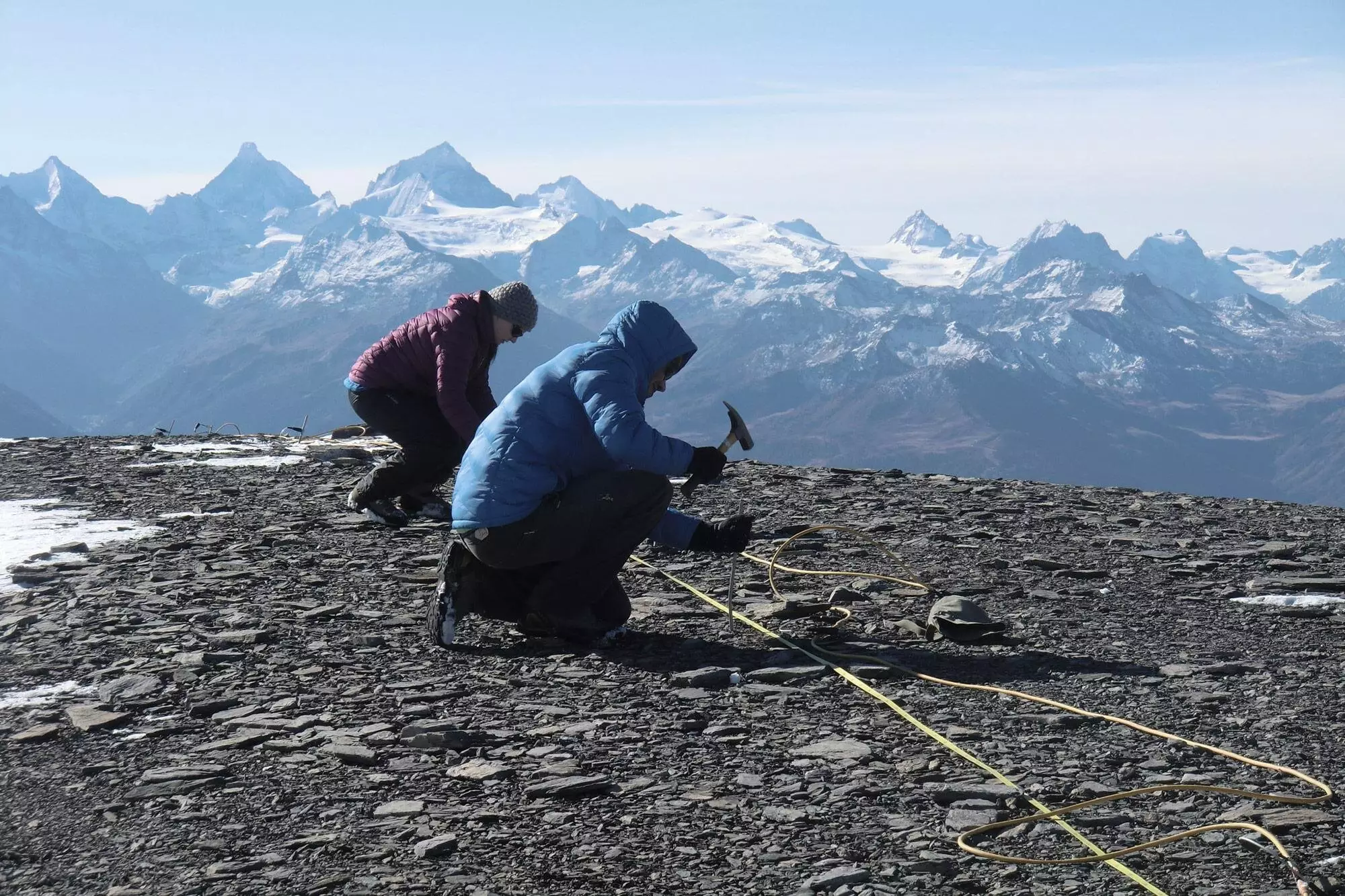The melting of permafrost in the Alps poses a significant threat to the stability of mountain slopes, leading to an increased risk of rockfalls. While the disappearance of glaciers is easily visible, the thawing of alpine bedrock is a less obvious but equally important phenomenon. As the underground ice melts, it can destabilize mountain slopes, alter landscapes, and jeopardize both people and infrastructure.
Monitoring the state of permafrost in mountainous regions like the Alps is crucial, yet traditional methods can be time-consuming and costly. Drilling holes up to 100 meters deep to measure ground temperatures provides only limited data points and cannot accurately assess the volume of ice present. This is especially challenging in high-altitude areas. However, recent developments in non-invasive measurement methods offer a more efficient and comprehensive approach to assessing permafrost conditions.
Geoscientists like Christian Hauck and his team at the University of Fribourg have developed a method that involves measuring electrical resistivity in the ground to analyze permafrost conditions over large areas. By passing electrical current through the ground and measuring the potential difference at various points, researchers can determine the presence of water in liquid or frozen form. Ice has a higher resistivity than liquid water, allowing scientists to quantify the amount of ice present in the ground.
Similar to a CT scan in medicine, researchers collect thousands of measurements to create a three-dimensional image of permafrost conditions. Placing electrodes across a designated area allows for deeper penetration of the electrical current, providing valuable insights into the distribution and quantity of permafrost. Despite challenges such as varying rock characteristics and slope inclinations, scientists continuously refine their models to improve accuracy.
Recent studies have demonstrated the significant impact of permafrost loss in the Alps. Data collected from resistivity measurements indicate a 15% loss of ice between 2015 and 2022 in some regions. Rising temperatures and the irreversible loss of permafrost following hot summers highlight the urgent need for proactive measures to mitigate the consequences of thawing permafrost.
Geological conditions play a crucial role in determining the future of alpine permafrost. As permafrost reaches or approaches a tipping point, the rate of its disappearance accelerates, potentially leading to increased rockfalls and landslides in previously stable areas. It is essential to develop predictive methods that can identify tipping points early on to prevent further destabilization and protect vulnerable areas.
The thawing of permafrost in the Alps presents a complex and pressing challenge that requires innovative approaches to monitoring and mitigation. By leveraging advanced measurement techniques such as electrical resistivity, researchers can gain valuable insights into the state of permafrost and make informed predictions about future developments. Addressing the impacts of thawing permafrost in the Alps is crucial for safeguarding both the environment and human safety in the region.


Leave a Reply